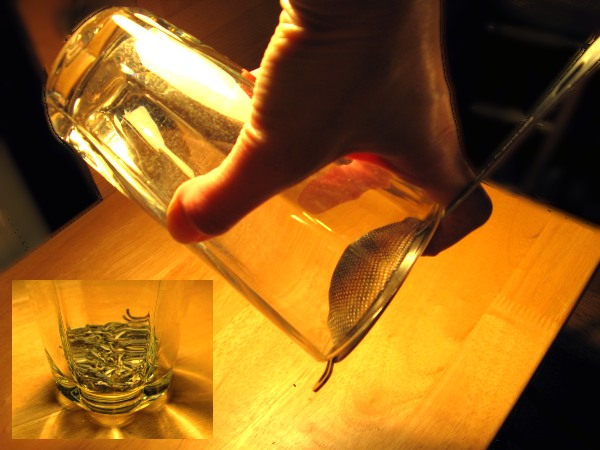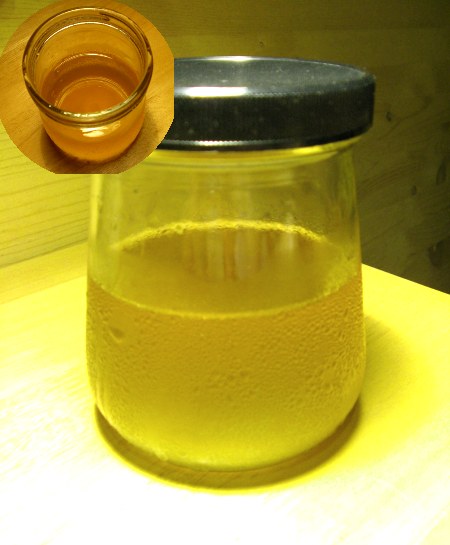Loose whole leaf green, black, white, oolong, pu-erh or any kind of tea is delicious, nutritious, beneficial to people when properly prepared and consumed in moderate amounts but even then there is a real possibility of having side effects or some type of allergy for sensitive individuals.
I know for a fact it is possible to be tea sensitive and it can be lessen or avoided while still drinking your cup of tea on a regular basis.There are some health risks and dangers associated with drinking any tea and especially japanese green tea called matcha tea which can be avoided if you are aware of it.
Green tea contains caffeine, vitamin k and also fluoride which can cause various problems when consumed in large quantities. Tea can also irritate your stomach which is not the result you'd want to get from drinking it.
This warnings are not usually advertised on tea packages and it helps to be conscious of these abilities of tea to produce undesirable effects on your health and body.
The side effects of green and other teas can be mild or quite heavy, depending on the level of sensitivity and the strength and amount of tea being consumed. You can avoid the tea dangers by experimenting with different ways of making and drinking your tea, while being careful not to drink tea that is too strong and not to drink it in excess.
The purpose of this post is to tell how you can make good green, black, white, oolong, pu-erh tea that is more like 'tea flavored drink' as opposed to regular tea but still has that distinct tea taste and you can sip it throughout the day without being concerned with having some kind of side affects or a negative reaction to it due to many complex nutritional tea properties.
Drinking tea made using the method below would be close to drinking plain water. This tea drink is not strong at all but it still tastes like tea at the same time.
It's very simple and involves making 'tea drink' rather than 'tea' which is essentially like making your tea much less strong and keeping it cool by putting it in a refrigerator and it has just a few steps to achieve the right results.
Having fresh made instant tea would be another benefit of this method, it works well when you need more convenience for the busy times.
It's also partially decaffeinated even though I only use loose whole leaf tea in it's natural state, not any decaffeinated kind.
I will describe the method a little later here because I would like to explain how I came to this solution and the reasons for it.
Good high quality tea - green, black, white, oolong, pu-erh has been shown to have positive effect on those people who drink it regularly in reasonable amount which can be a few cups a day, it tastes refreshing, uplifting and can even be addictive.
However even a moderate amount of tea a day every or almost every day can have a different effect and it depends on several factors. High quality whole leaf tea and especially green tea and even more specifically Japanese sencha green tea while being beneficial for health is not completely innocent drink in terms of how it may affect different people.
Besides caffeine tea has many other properties that while being beneficial to a lot of people can cause very undesirable reaction in tea sensitive individuals and there's a very large number of those.
When I noticed a clear indication of the presence of those different reactions I started searching for information on it, it was quite surprising and even confusing because of the overpowering amount of the facts that were out there describing only the positive side of drinking teas, green, black, oolong, white or pu-erh.
It was not even possible to find a piece of information that would tell about other effects and I didn't know what to make out of it.
I continued my search and eventually found plenty of proof that it is in fact possible to have a different reaction to drinking tea, green in particular and that validated my concerns and relieved my doubts.
I found that a lot of people experience the same or different side effects from drinking green, black, white or other tea, and most people are trying to drink more green tea due to it's widely known health benefits.
Those side effects from drinking tea are often hard to describe, they have a kind of almost 'not there' nature and yet it's absolutely certainly there. It can vary from a slight discomfort to a very strong and obvious discomfort and may be felt somewhat similar to heavy head or unsettled stomach or something like general felling of being under pressure and low key or something else that is hard to name.
The hard part was that the taste of good whole leaf green, black, oolong, white or pu-erh tea, any high quality tea was something I felt I was almost addicted to so I've experimented with many different ways of making and drinking it.
While doing my search on the tea side effects or allergy I found advises such as not drinking strong tea or not drinking it at certain times of the day or at different times based on the personal conditions.
It's not advisable to drink tea on an empty stomach and neither full stomach due to the acid being produced by the tea which can lead to the stomach being irritated. It's also not a good idea to drink tea close to bed time or in some specific conditions such as when you loose or lost blood because tea is not a suitable food product for that, it can make you more anemic. Also it may not feel and even taste good even if you just have a cold or feel sick.
It can feel different to different individuals but it's a possibility and it can be lessened or avoided.
So for the best results you can drink a few cups between meals and that should cause no side effects.
I wanted to drink tea more often and be less concern with the time of the day or other factors so I devised this method and it seems to be the solution to all that.
I start with the best quality loose whole leaf tea I can find and able to afford. About 1 or 2 big spoons of tea leaves go into a glass and get a hot water bath or a rinse for 15 to 45 seconds depending on the kind of tea. The shortest time is good for Japanese sencha green tea and the longest for strong black tea like Assam. The sencha tea is very raw and delicate so I try to be gentle with it and pour not but almost boiling water over it to give it a rinse/ hot bath.
After that I may even rinse the tea again with room temperature water if I want to take out the residue from the first rinse. The second rinse is immediate and takes just a couple of seconds. The amount of water for both rinses is very small, just enough to cover the leaves in a glass. The water from both rinses gets discarded.
Giving tea a hot rinse makes it much cleaner, tea may have different residue from the production process and also lessens the amount of caffeine in substantial amount.
Any glass or ceramic cup or jar can be used for this tea making recipe.
After the rinse I pour a little larger amount of water over the leaves, the temperature of the water may be a little lover than that at the boiling point for green tea and even a few more bits lower for sencha and I give it about 2 to 4 min before pouring it off into a glass jar.
Any clean glass jar with a lid or a bottle can be used, I like using a jar because it's easier to clean than a bottle.
I repeat this process 2 more times with the steeping/ brewing time shorter than the first one and another 1 last time using just room temperature water.
When pouring steeped tea into a jar and also to pour/ throw out the rinse water I use a small cup size stainless steel strainer in the inverted position in relation to the jar so that all tea leaves stay in the glass and you don't have to move them in and out for multiple steeping/ brewing steps because they don't get collected in the strainer.
At the same time the only thing used for brewing tea this way is the glass so there is no other materials involved such as metal or plastic, no extra parts which can affect the taste and quality of prepared tea.
Using paper or fabric bags to brew tea would be completely unsuitable for making good tasting and good quality tea.
This is how you can hold a cup strainer to pour out tea into a jar and keep the tea leaves inside the glass to use it for multiple brewing process.

pic: whole leaf tea being strained using stainless stell cup strainer
Steeping high quality green, black, white and especially oolong and pu-erh tea multiple times is perfectly fine and widely used by many people everywhere including tea producing countries like Japan and China even when making just a regular cup of tea.
In the method I'm describing here all tea from 4 step steeping/ brewing goes into one jar to create a multi step mix. After all the steeping is finished I add an almost undetectable amount of citric acid to the jar with tea. Citric acid prevents farther oxidation of the tea while it's being stored in the refrigerator for a day or more. The amount of citric acid I add is so small that it doesn't add any sourness to the taste of tea, it's just a few grains of powder.
Citric acid is sold as a white powder and can be bought in some stores, often ethnic ones. It's close to being a natural product and acts/ used as preservative for food. You don't have to use it but it's an option.
You can also use a very tiny amount of ascorbic acid powder which is sold as vitamin C. Only use pure ascorbic acid powder with no additives.
These two acids, citric and ascorbic, actually also help in digestion of green tea. Lemon can be used but it's hard to make it so that it doesn't alter the taste of tea. If you like the tea taste lemony then of course just use fresh lemon for that.
After all is finished, the jar with a tight lid on it goes into the fridge and consists of very concentrated pure natural fresh tea. You can then take a very small amount of it to mix with a glass of pure fresh water, 1 or 2 spoons of whole leaf tea being used in this preparation can make a few glasses of tea, depending how week or strong you want it to be. I like to make weaker tea so that I can drink it throughout the day and one jar may last for more than 5 times.
Here's a jar of freshly made concentrated tea.

pic: fresh brewed whole leaf tea in a glass jar.
concentrated tea
You can add hot or cold water to this tea, it's your choice.
Cold tea seems to cause no stomach irritation compared to hot tea. If you are tea sensitive you may be able to drink a larger amount of weaker cold green tea with no negative effect.
Even though the tea made using this recipe is a lot weaker than a regular cup of tea the taste of the tea is still there when you drink it between meals and the absence of the taste of other foods makes it more apparent.
So in case of being too sensitive to green, black, white, oolong, Pu-erh, any tea this may be the way to enjoy your tea.
If you are not that sensitive and can drink stronger tea with no side effects you can just use this method and prepare concentrated tea in advance to make 'instant' tea any time.
in this post: make green white black oolong pu-erh tea loose whole leaf tea side effects warnings allergy risk negative effect dangers toxicity hot cold fresh made tea concentrated decaffeinated fresh made tea instant drink


I also like leaf tea.
ReplyDeleteVery nice article on green tea
ReplyDeleteThanks to sharing
yaP! what an idea?
ReplyDeleteI was looking for this info because there's not too many warnings about green tea compaired to the benefits and many people don't know you have to be careful when drinking tea.
ReplyDeleteI really want to say thanks for sharing such an amazing and meaningful article.Keep on sharing such kind of articles.
ReplyDelete